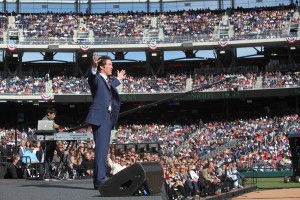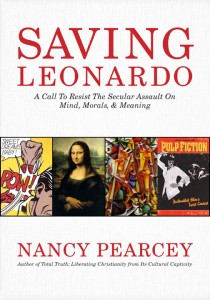By Cris Putnam
 Continuing the series Testing the Spirits, we now turn to the second test in 1 John 4: “Little children, you are from God and have overcome them, for he who is in you is greater than he who is in the world. They are from the world; therefore they speak from the world, and the world listens to them.” (1 Jn 4:4-5) The second test is:
Continuing the series Testing the Spirits, we now turn to the second test in 1 John 4: “Little children, you are from God and have overcome them, for he who is in you is greater than he who is in the world. They are from the world; therefore they speak from the world, and the world listens to them.” (1 Jn 4:4-5) The second test is:
2) Test their regeneration. Are they worldly?
Are they manifesting evidences of being children of God, or are they just parroting the motivational success and wealth messages from the world? The Gospel is an offense to the world system. Does the world find them offensive or are they welcomed by the world. Jesus said, ““Woe to you, when all people speak well of you, for so their fathers did to the false prophets.” (Lk 6:26) False prophets are well spoken of and they draw huge crowds by prophesying what people want to hear. This is a warning against seeking the approval of the world rather than being faithful to God.
By way of example let us examine Pastor Joel Osteen of Lakewood Church, which according to Church Growth Today is America’s largest and fastest growing church. On July 16, 2005 after completing $95 million dollars in renovations, Joel moved Lakewood Church into the former Compaq Center. It is the largest worship center in the United States with more than 38,000 attendees each week.
Osteen says “Your ‘lot in life’ is to continually increase.”[1]
John the Baptist remarked of Jesus, “He must increase, but I must decrease.” He who comes from above is above all. He who is of the earth belongs to the earth and speaks in an earthly way…” (Jn 3:30-31)
Jesus told the rich young ruler, “One thing you still lack. Sell all that you have and distribute to the poor, and you will have treasure in heaven; and come, follow me.”(Lk 18:22)
Jesus said, “If anyone would come after me, let him deny himself and take up his cross daily and follow me.” (Lk 9:23)
Osteen says “Your lot in life is to be an overcomer, to live prosperously in every area.”[2]
Paul wrote, “But those who desire to be rich fall into temptation, into a snare, into many senseless and harmful desires that plunge people into ruin and destruction.” (1 Ti 6:9) Furthermore, if you live in America this next verse certainly applies to you even if you consider yourself in lower economic strata (you are rich compared to 90% of the rest of the world): “As for the rich in this present age (you), charge them not to be haughty, nor to set their hopes on the uncertainty of riches, but on God, who richly provides us with everything to enjoy.” (1 Ti 6:17)
James is a little more direct, “Come now, you rich, weep and howl for the miseries that are coming upon you. Your riches have rotted and your garments are moth-eaten.” (Jas 5:1-2)
Osteen says, “Quit eating the cheese and crackers and step into the banquet hall!” [3]
John wrote a prophetic word to the church in Laodicea that applies well today, “For you say, I am rich, I have prospered, and I need nothing, not realizing that you are wretched, pitiable, poor, blind, and naked.” (Re 3:17)
I believe it is safe to say that Osteen fails test two, even though his Christology is correct. That is why the Bible gives us more than one test for determining false prophets. In the next installment, we will look at the third criterion.
[1] Joel Osteen, Your Best Life Now: Seven Steps to Living at Your Full Potential, Success Book Summaries, http://elgme.com/blog/wp-content/uploads/2011/05/Your-Best-Life-Now-Summarypdf.pdf
[2] Ibid
[3] Ibid





